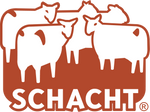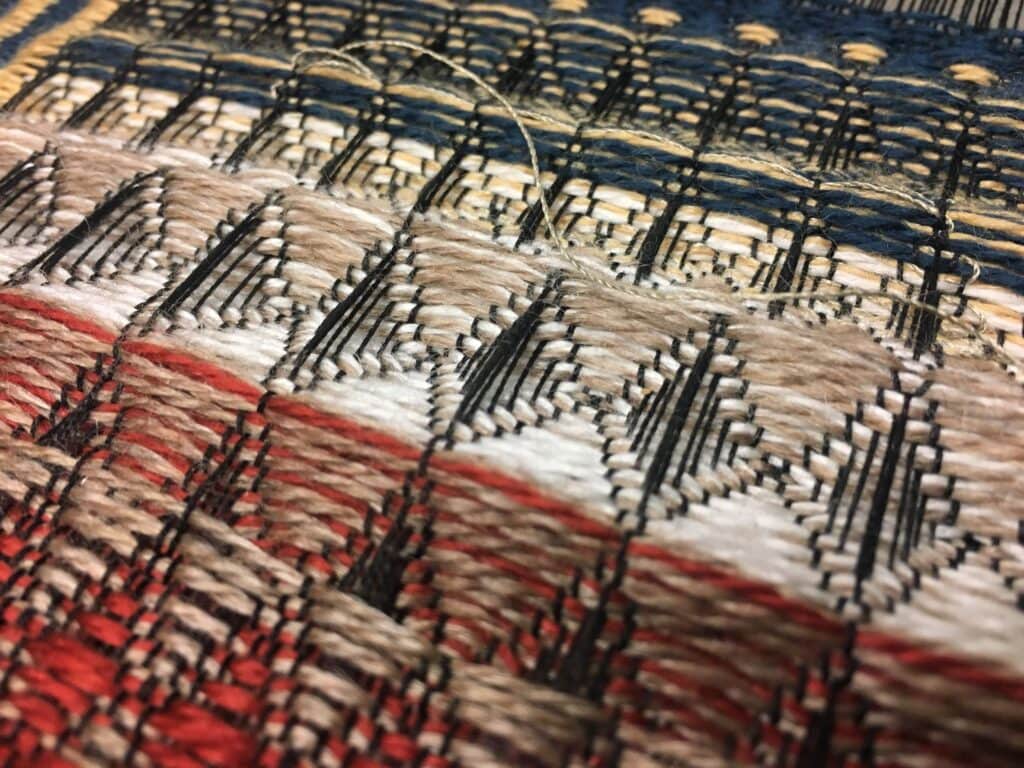We recently interviewed Laura Devendorf, Assistant Professor of Information Science at University of Colorado Boulder. Her work is done in the Unstable Design Lab where she and her students develop woven textiles that are programmed to record, experience, or change through interactions with the environment or people.

Laura Devendorf works on a Baby Wolf loom creating fabrics that can change color based on electric impulses and even body temperature. (Photo by Glenn Asakawa/University of Colorado)
SSC: What is the Unstable Lab?
Laura: It is a research lab and it is hosted at University of Colorado Boulder. Our research lab houses mostly full time PhD students. So these are students who work at the university for 4 to 5 years. The main contributors at the lab are myself and the students. We also host an artist in residency each fall. [Learn about the residency here.]

The Unstable Design Lab Team (pre-pandemic)
SSC: What kinds of weaving equipment do you have?
Laura: We have two 8-shaft Baby Wolf looms. We also have a selection of smaller looms such as Cricket and School looms and a TC2 prototyping jacquard loom.
SSC: As handweavers, we may not think about the relationship of weaving to science or engineering. Can you talk more about how these two interact?
Laura: In a general sense, all computer technology derived from textile technology. Although it looks very different now, we think of the loom as a very early computer. More specifically, we see more and more research from an engineering perspective where they have sort of just discovered soft materials. And the questions they’re asking have to do with new technology such as robots and the different structures and mechanics that are possible with soft materials. A lot of this research is happening completely independently from the textile world. So a lot of the projects are just slapping textiles and technology such as a circuit board together. But, you really have to re-imagine the whole system to engineer soft structures that work well.

Detail of Laura's fabric that changes color. (Photo by Glenn Asakawa/University of Colorado)
Part of our mission at the Unstable Lab, is that we want to emphasize craft and handweaving expertise because, as I tell my students, you can’t really understand how to integrate circuits and technology unless you have built the fabric from the ground up.
It’s quite a bit more complicated than many people give it credit for—weaving that is.

Sampling on the TC2 Loom
SSC: Do weave structure and aesthetic design come into play? How do they affect electronic aspects?
Laura: I don’t want to make something that completely sacrifices look and feel. But the priorities for some of my projects focus on utilizing certain materials over aesthetics. So I know I have to use, say, these five materials in a specific arrangement. And a lot of the prototyping looks at how to do that in an aesthetically interesting way. So we think about what other weaving structures we could try. For a recent project, the weavings were going to a gallery, and gallery visitors were supposed to know that they could touch it. So we designed the weavings to be inviting with soft wool and an eye-catching pattern. The circuitry we designed for this project was left partially exposed and adds to the aesthetic as well. This project was called A Fabric That Remembers.

One of the finished weavings from the project A Fabric That Remembers.
Laura: The tan panels in the weaving can be pressed. They are connected to a screen that logs how long and how hard the fabric is touched. It shows the history of who is interacting with it and how they are interacting with it. Some of the challenges of the project included how to get all the circuitry into the weaving while still having it be aesthetically inviting for our audience to touch. This is currently hanging in a tech consultancy research center in San Francisco. [Watch the time-lapse below of how this fabric was woven. Read more about the project here.]
SSC: How do you anticipate that your research will affect people’s experience with textiles? (in the present or the future)
Laura: The projects we have been doing in the lab are much more future-thinking and experimental. One project I did with a recent graduate was focused on how smart textiles could change the way a person interacts with their environment. [You can learn about this project here.] Another focus for me has been trying to find different way to remember my relationship with my children. I wonder what if my clothes could remember how it felt to hold my daughter as a small child. In our lab, we try to look deeper than just basic function and look for ways that smart textiles can enhance our emotional experiences.

This woven poncho is from the project Exoskeletons for Caregivers. It is embedded with force sensors that record where and how force is put on the body.
SSC: Where can we learn more about the Unstable lab and follow your research projects?
website: https://unstable.design/
instagram: https://www.instagram.com/unstabledesignlab/?hl=en
our resource guide (which is still in progress): https://unstable.design/prototyping-smart-textiles/_book/

